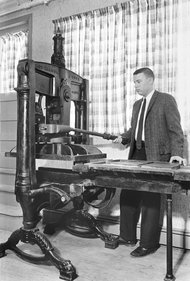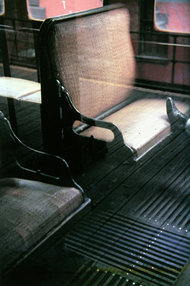Is Some Sort of Journalistic Karma Striking the New York Times?
Ironic–Abramson tries recruiting @Guardian‘s Gibson for digital at @NYTimes. After it falls thru @Guardian hires the Times’ digital maven.
— Philip Turner (@philipsturner) May 19, 2014
To expand on my tweet, it is Aron Pilhofer that’s leaving the New York Times and joining the Guardian now as Executive Editor for digital. As is clear from the Guardian‘s announcement, he was recruited by Janine Gibson, beginning last March, she points out, to make clear it was underway before the recent unpleasantness. Gibson has found herself an inadvertent participant in the Jill Abramson firing debacle, as she had been in the process of being courted by Abramson, and other Times bigs including Dean Baquet, now the top editorial exec at the Times replacing Abramson. A continuing disagreement among the principals in the imbroglio is what Abramson said to Baquet about the likely level of Gibson’s role, if she came to the Times. Baquet says Abramson never told him they’d be co-managing editors. For what it’s worth, I think he ought to have sensed she’d be a senior figure, with a great rep preceding her at the Guardian. Did Baquet underestimate her likely station, hence his dismay upon learning of it? Whichever is the case, it seems clear that Abramson never had a chance to offer Gibson any job at all before Sulzberger acted to get ride of her, following lunch with an angry Baquet. I love the irony then of the fact that Janine Gibson, onetime recruiting target of the Times, just “pilfered,” in a manner of speaking, a bright new hire named “Pilhofer,” an improbable aural accident of two words sharing several sounds.
I might not have bothered to tweet this yesterday, or written this follow up—the lethal politics of the NY Times don’t interest me that much—if not for the high irony of the new hire.
I had an experience of my own involving the Times. From 1997-2000 I was Executive Editor at Random House for the Times Books imprint, a long running line of books for which the Times licensed their name to titles often written by their reporters, or drawn generally from the newspaper’s deep reporting. I liased with editors and staff at the newspaper, dreaming up book ideas with sections like the Sunday Book Review (Books of the Century); Real Estate (“If You’re Thinking of Living In . . .“; City (FYI); and Dining (The Best of Craig Claiborne). I also got to do a fun analog job of photo-editing, publishing illustrated wall and desk calendars drawn from the Times’ 100-plus-year-old Photo Archive, once a physical place that is now digitized.
As the imprint liaison I was invited to a few Times parties. I recall going to one for a new Anna Quindlen novel. I arrived on the early side. At first it seemed a light, fizzy crowd, certainly no tensions evident. Suddenly I took note of a rising anxiety in the room as senior honchos arrived, one by one, each seeming to jockey for positioning in some hierarchy fully visible only to those in the power circle, though the rest of us in the room could sense it. The toasts and encomiums that came when the author was feted seemed to be done through gritted teeth, as eyes darted around the room. Watching the takedown of Abramson committed by Sulzberger reminded me of that Times party, which I recall leaving as soon as the speeches were finished.
As a closer here, I want to share the succinctly apt tweet put out by Janine Gibson the day Jill Abramson’s firing was announced by the NY Times.
Bloody hell.
— Janine Gibson (@janinegibson) May 15, 2014





